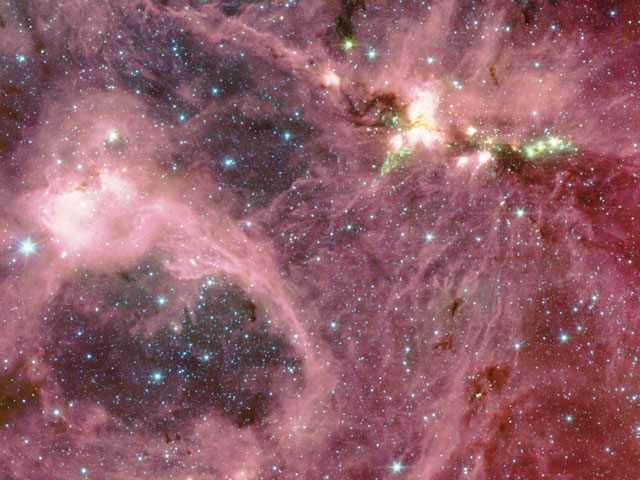Massive Star Forming Region DR21 in Infrared

Explanation:
Deep in the normally hidden recesses of
giant molecular cloud DR21,
a stellar nursery has been found creating some of the
most massive stars yet recorded.
The orbiting
Spitzer Space Telescope's
Infrared Array Camera opened the
window into the cloud
last year in mid-
infrared light.
The cloud is opaque to visible light because of dense
interstellar dust.
Noticeable in the
above
representative color infrared Spitzer image
are huge
bubbles, a complex
tapestry of dust and gas, and very massive stars.
The infrared filaments actually glow because of
organic compounds known as
PAHs.
The intricate patterns are caused by complex interactions between
interstellar winds,
radiation pressures,
magnetic fields, and
gravity.
The
pictured region spans about 75
light years and lies about 6,000 light years distant toward the
constellation of
Cygnus.
Authors & editors:
Robert Nemiroff
(MTU) &
Jerry Bonnell
(USRA)
NASA Web Site Statements, Warnings,
and Disclaimers
NASA Official: Jay Norris.
Specific
rights apply.
A service of:
LHEA at
NASA /
GSFC
& Michigan Tech. U.

